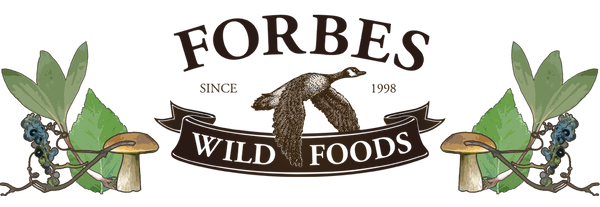지속 가능하고 안전하게 버섯을 수확하는 방법
•4월 05 2021 에 게시됨


버섯을 수확하는 것은 숲에서 시간을 보내는 훌륭하고 생태적으로 친화적인 방법이며 시작하기가 매우 쉽습니다. 아이스버그 상추와 시금치의 차이를 알 수 있다면 버섯을 식별하고 따는 것에 대해 배우기 시작할 준비가 된 것입니다. 아마도 안전한 방법으로, 자신에게 안전할 뿐만 아니라 지역 생태계를 방해하거나 버섯에 해를 끼치지 않는 방식으로 이를 수행하고 싶을 것입니다. 그렇다면 개인적인 용도나 이익을 위해 지속 가능한 방식으로 버섯을 수확하는 방법은 무엇일까요? 모두 따는 동안 숲과 어떻게 상호 작용하는지에 달려 있습니다. 실제로 버섯을 모으는 것은 완전히 지속 가능합니다. 생태적으로 친화적이지 않은 것은 토종 식물을 짓밟고, 땅을 압축하고, 너무 많은 사람이 다닐 때 발생할 수 있는 침식입니다.
지속 가능한 버섯 사냥의 주요 원칙은 토착 식물 종을 손상시키거나 죽이는 것을 피하는 것입니다. 토착 식물 종과 침입 식물 종을 모두 식별하는 법을 배우면 특정 유형의 버섯을 찾는 데 도움이 됩니다. 또한 원치 않는 침입 식물을 제거하고 멸종 위기에 처하거나 위협받는 종을 해치는 것을 피하도록 장려합니다.
깨끗한 버섯을 수확하는 것은 당신이 신경 쓴다는 분명한 신호입니다. 바구니에 버섯을 넣기 전에 작은 칼날과 브러시로 잔해물을 제거하세요. 이것은 음식에 대한 열정과 존경을 보여주며, 더 오래 지속되는 수확으로 이어지고 요리 준비가 더 빨라집니다. 가볍게 걷고, 무거운 수확물을 덤불에서 끌어내거나 따는 동안 가지고 다니는 대신 작은 바구니를 중앙 위치로 운반하세요. 이렇게 하면 허리와 숲 바닥에 부담이 덜합니다. 그리고 물론 쓰레기를 버리거나 아무것도 남기지 마세요. 자연에서 보낸 시간의 흔적을 남기지 마세요.
버섯을 발견하면 실제로는 지하와 식물과 나무 전체에 사는 훨씬 더 큰 유기체의 작은 부분만 수확하는 것입니다. 종종 거대한 유기체인 이러한 유기체는 환경 내에서 청지기 역할을 하며, 많은 종과 공생하고 먹이를 주면서 약한 종을 제거하고 죽은 물질을 분해하며 그 과정에서 숲을 풍요롭게 합니다. 버섯은 숲을 가로지르는 광대한 네트워크와 같은 유기체에 연결된 자실체입니다. 버섯은 번성하기 위해 몇 가지 완벽한 조건에만 의존하며, 자연 환경에서는 정확히 그렇게 합니다. 날씨가 적절할 때 아름다운 버섯은 숲의 균사 네트워크에서 선물로 역할을 합니다.

절단 vs 뽑기
땅에서 자라는 거의 모든 버섯의 가장 좋은 관행은 버섯을 뽑은 다음 흙으로 덮여 있을 수 있는 꽁초를 잘라내고 버린 다음 깨끗한 버섯을 바구니에 넣는 것입니다. 유럽과 북미에서 수행된 광범위한 연구에 따르면 버섯을 뽑는 것과 자르는 것 사이에는 거의 차이가 없다는 것이 밝혀졌지만*, 뽑는 것이 버섯이 없어졌다는 신호를 생물체에 더 빨리 보내 더 많은 버섯을 열매 맺는 데 에너지를 전환할 수 있다고 믿어집니다. 자르면 여전히 에너지를 받을 수 있는 노출된 버섯 덩어리가 남아서 아직 자라고 있는 다른 버섯의 크기가 줄어들 수 있습니다. 그렇긴 하지만, 다른 많은 요인이 해당 연도의 풍부함을 결정하며, 자르기와 뽑기가 미래의 버섯 수확량에 미치는 영향은 통계적으로 중요하지 않을 수 있습니다.
버섯을 뽑는 중요한 이유 중 하나는 버섯에 대한 적절한 ID를 얻는 것입니다. 때때로 버섯은 땅 표면 바로 아래에 중요한 세부 사항을 숨깁니다. 예를 들어, 줄기를 자르면 줄기의 맨 아래에 다른 색 얼룩이 생기거나 줄기가 시작되는 알과 같은 형태의 잔여물이 있습니다. 일부 버섯은 뿌리처럼 보이는 것도 있습니다(뿌리 있는 다공균류와 오우데만시엘라 속).

나무에서 자라는 버섯은 일반적으로 나무를 최대한 손상시키지 않기 위해 나무에서 잘라내야 합니다. 나무가 매년 버섯을 계속 생산하기를 원한다면, 나무가 손상되면 나무를 일찍 죽이거나 방어 체계를 약화시켜 궁극적으로 버섯을 자원으로 경쟁하는 감염을 초래하여 버섯의 수명이 단축될 수 있습니다.

과도한 수확
과도한 수확은 버섯에 대한 주요 관심사가 아닙니다. 생태계에서 제거하면 사라지는 식물과 달리 버섯은 지하에 사는 훨씬 더 큰 유기체의 자실체입니다. 사과를 따는 것이 나무에 해를 끼치지 않는 것처럼 버섯을 수확하는 것은 유기체에 해를 끼치지 않습니다. 숲에서 가능한 모든 살구버섯을 따더라도 각각 수십억 개의 포자가 들어 있는 몇 개는 틀림없이 놓칠 것입니다. 또한 대부분의 버섯은 포자로 번식하는 것 외에도 무성생식으로 번식할 수 있습니다. 마지막으로 살구버섯은 여전히 지하에 존재하여 언젠가 다시 열매를 맺을 준비가 되어 있습니다. 많은 버섯이 풍부하지만 서식지 상실, 과도한 오염 또는 기타 환경의 상당한 변화로 인해 현재 멸종 위기에 처한 품종이 있습니다. 보호 구역에 들어가지 말고 금지된 곳에서는 따지 마십시오.

버섯이 사라지는 원인은 무엇일까요?
버섯은 숙주, 서식지, 날씨 및 기타 식량 자원에 전적으로 의존합니다. 버섯이 어느 해에는 풍부하고 다음 해에는 희소한 주요 이유는 날씨입니다. 토양 온도, 수분 및 영양에 대한 접근성은 특정 조건을 좋아하는 많은 종에게 중요합니다. 버섯이 사라지는 다른 요인으로는 오염, 압축 또는 기타 토양 교란, 나무 및 식물 종의 손실이 있습니다. 많은 버섯이 다양한 식물 종의 뿌리와 균근( 공생) 관계를 맺고 있기 때문에 버섯이 해당 생태계에서 번성하려면 이러한 종이 건강한 수로 존재해야 합니다. 다른 버섯은 기생성이며 다양한 정도의 저항성을 가진 많은 잠재적 숙주가 있는 환경에서만 번성합니다.
요정 고리나 버섯 줄기가 숲으로 휘어져 있는 것을 볼 때, 이 버섯 원은 매년 움직이며, 2차 분해자로서 마법을 부리며 땅 속의 자원을 소모하면서 더 커지고 더 퍼져 나갑니다. 요정 고리가 성숙함에 따라, 한때 조밀한 작은 버섯 무리였던 것이 멀리 휘어져 나갑니다. 넓게 분포된 "고리 구성원"은 결국 다른 요정 고리를 유발하여 다시 조밀한 작은 버섯 원으로 시작하여 새로운 영양분을 위해 밖으로 이동합니다.

ID 목적으로 선택
새로운 버섯에 대해 알아보려고 할 때 따는 것은 필수적입니다. 버섯을 직접 만져보면 얼마나 단단한지, 어떤 질감인지, 어떻게 부러지거나 찢어지는지 알 수 있습니다. 내부를 들여다보는 것은 특정 버섯을 식별하는 데 필수적입니다. 얼룩이 있는지 확인하거나 고급 기술을 사용하는 경우 요오드와 같은 특정 화학 물질에 대한 접촉 반응을 기록할 수 있습니다. 중독 위험 없이 모든 버섯을 다룰 수 있습니다. 심지어 죽음의 모자와 파괴하는 천사조차도 걱정 없이 다룰 수 있습니다.
다른 사람들이 버섯을 식별하는 데 도움을 줄 수 있도록 버섯을 촬영할 때는 버섯의 윗면과 아랫면을 선명하게 촬영하는 것이 중요하며, 버섯에 얼룩이 있는 경우 횡단면을 촬영하는 것도 중요합니다. 이러한 중요한 세부 사항에 집중하세요. 이 블로그의 모든 사진은 휴대전화로 촬영되었습니다. 보통의 카메라라도 충분히 좋은 사진을 찍을 수 있습니다.

아가미 또는 기공의 선명한 사진과 줄기와 뚜껑이 어떻게 연결되는지는 버섯을 식별하는 데 사용되는 주요 특징입니다. 위의 이 버섯의 뚜껑은 밑면이 약간 녹색인 독버섯인 Vomiter( Chlorophyllum molybdites) 와 놀라울 정도로 비슷해 보이지만, 더 자세히 살펴보면 아가미가 갈색이고 고리 모양이 있는 식용 Shaggy parasol( Chlorophyllum rhacodes) 임을 알 수 있습니다.


횡단면은 내부 얼룩을 보여주는 데 도움이 될 수 있습니다. 일부 버섯은 파란색이 빠르게 번쩍이는 반면, 다른 버섯은 회색과 분홍색이 번쩍이는 더 미묘한 얼룩이 있을 수 있습니다.

마츠타케와 카타텔라스마의 차이를 찾는 것은 어려울 수 있지만, 아가미가 있어 무엇을 살펴봐야 하는지 알고 있다면 쉽게 구별할 수 있습니다.

버섯 따기는 숲을 탐험하고 즐기는 훌륭한 방법입니다. 재미있고, 교육적이며, 좋은 운동이며, 흥미진진하고 맛있는 발견으로 이어질 수 있습니다. 책임감을 가지고 하면 지역 생태계에 부정적인 영향을 미치지 않습니다. 오히려 야생 공간을 보존해야 할 필요성을 인식하고 목재를 위해 나무를 수확하는 것 이상의 숲의 가치를 보여줍니다.
* http://www.fungimag.com
* https://www.wsl.ch




댓글
0 댓글
댓글을 남겨주세요